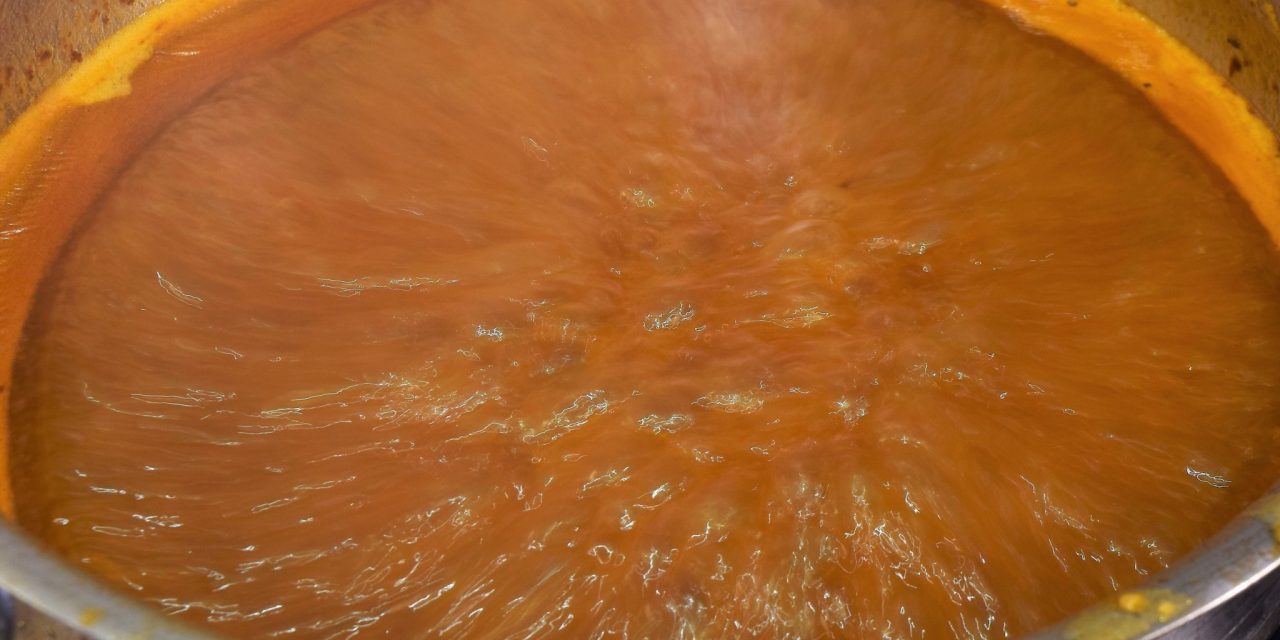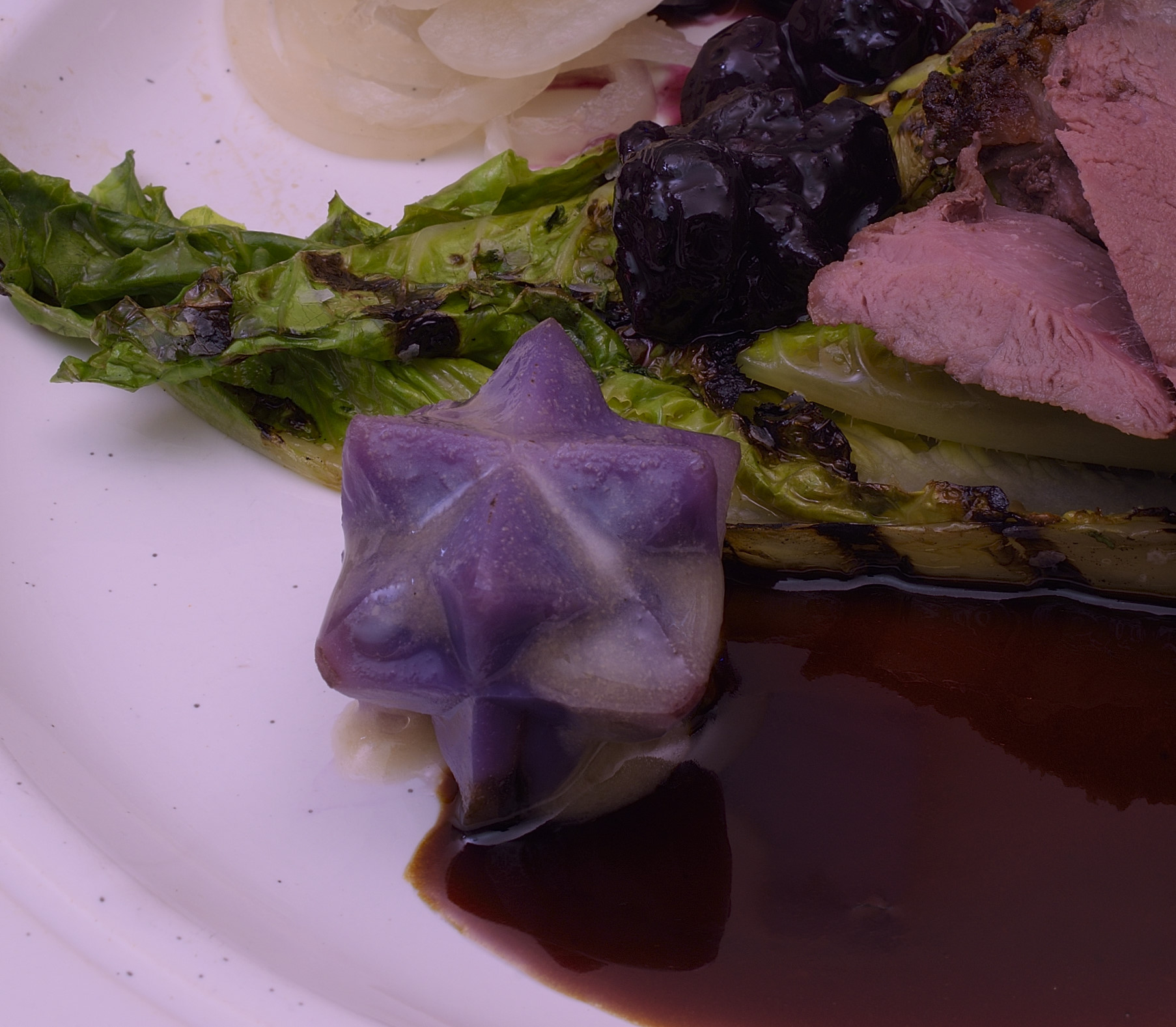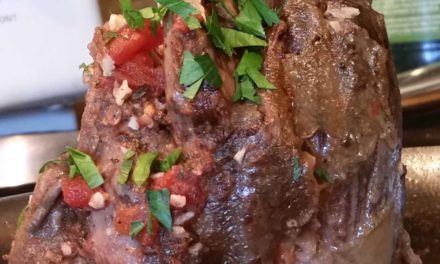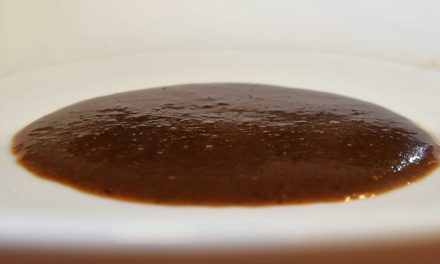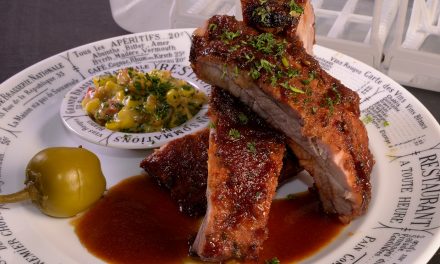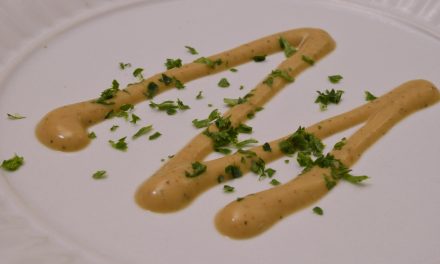Sous vide will not wash your car while you’re driving it home from work.
Properly executed sous vide provides perfectly cooked/preserved proteins and other foods. But despite its many benefits, sous vide will not make the sauce for us. We long in vain for the gadget that will do that. So, members of SVR and other enthusiasts eagerly “dabble” in “Pan Sauces,” aka “finishing sauces.” Traditionally, these sauces were hastily assembled in the pan after sautéing items like chicken breasts, veal and fish. The mystique perpetuated by secretive chefs has contributed to the general public’s confusion about the fabrication and actual contents of these sauces. Somewhere along the line, people have come to use wine to create the volume of pan sauces. The result is what gives us the name of this article.
The tension in the kitchen was palpable, but the sauce was purplish.
Having learned how to harvest and clarify Sous Jus from the sous vide pouch, shouldn’t we be able to abandon the use of instant sauce and gravy bases? Well, not entirely. Most people are familiar with the term “stock” (or at least the idea), but consumers are much more likely to pick up a can or cube at the market than actually make it themselves. It is almost invariably loaded with sodium. The newly introduced sodium free versions can be prohibitively expensive. Almost nobody even uses the culinary term “Espagnole” any more. Espagnole is the undeniably puzzling term that Escoffier and his contemporaries used for their “brown” mother sauce. Stock made from roasted bones and caramelized mirepoix gave birth to all the cross bred progeny like Bordelaise sauce, demi-glace, glace de viande and even what old school chefs came to call “rich brown gravy.”
Dig the colors
If your sauce wasn’t white, yellow or red, it was presumed to depend on Espagnole in some form. Fast forward to modern times: the eternal quest for cost-cutting short cuts has caused Espagnole based sauces to devolve into an assortment of non-specific, instantized bastardizations like what is now called “Pan Sauce,” frequently mentioned in the same breath with the equally deceptive malaprop, “red wine reduction.” The hope is that a sauce can be created in a dirty skillet without the inconvenience of actually including the rich, dark stock that these finishing sauces were originally based upon.
When it’s brown, it’s done. When it’s black–YOU’RE done.
Having cavalierly omitted the Espagnole/brown stock part, many modern “brown” sauces are not even brown. This leaves us with “motherless,” orphaned substances, oscillating from watery and flavorless to murky, salty, cloying and pasty with an oil slick on top. Tan sometimes, like stained spackle. Gray, even. Worst of all, when you see that term, “red wine reduction (sauce)” on a menu, there is a good chance you are going to have a PURPLE puddle on your platter. It is one thing to incorporate heavily reduced red wine to add flavor to a sauce. But it should never be used to provide VOLUME to the sauce. You cannot substitute wine for brown stock.
The name of the beast.
So, Espagnole is not what it sounds like. “Red wine reduction (sauce)” and “pan sauce” and are not what they sound like either. Our confusion is compounded by the difference between how sauces are built and how they are named. Boiling some red wine with some shallots does not make a red wine sauce. Once thickened, it becomes what I disdainfully refer to as “purple gray-gray.” Putting mushrooms in it will not help, either. That just gives you purple gray-gray with mushrooms. Relying on a few drippings in a sauté pan to create a “pan sauce” is asking too much of those few flecks of Maillardized proteins. Without brown stock, none of those sauces will have “substance” or “body.”
Properly prepared Espagnole/brown stock will not need wine to make it brown.
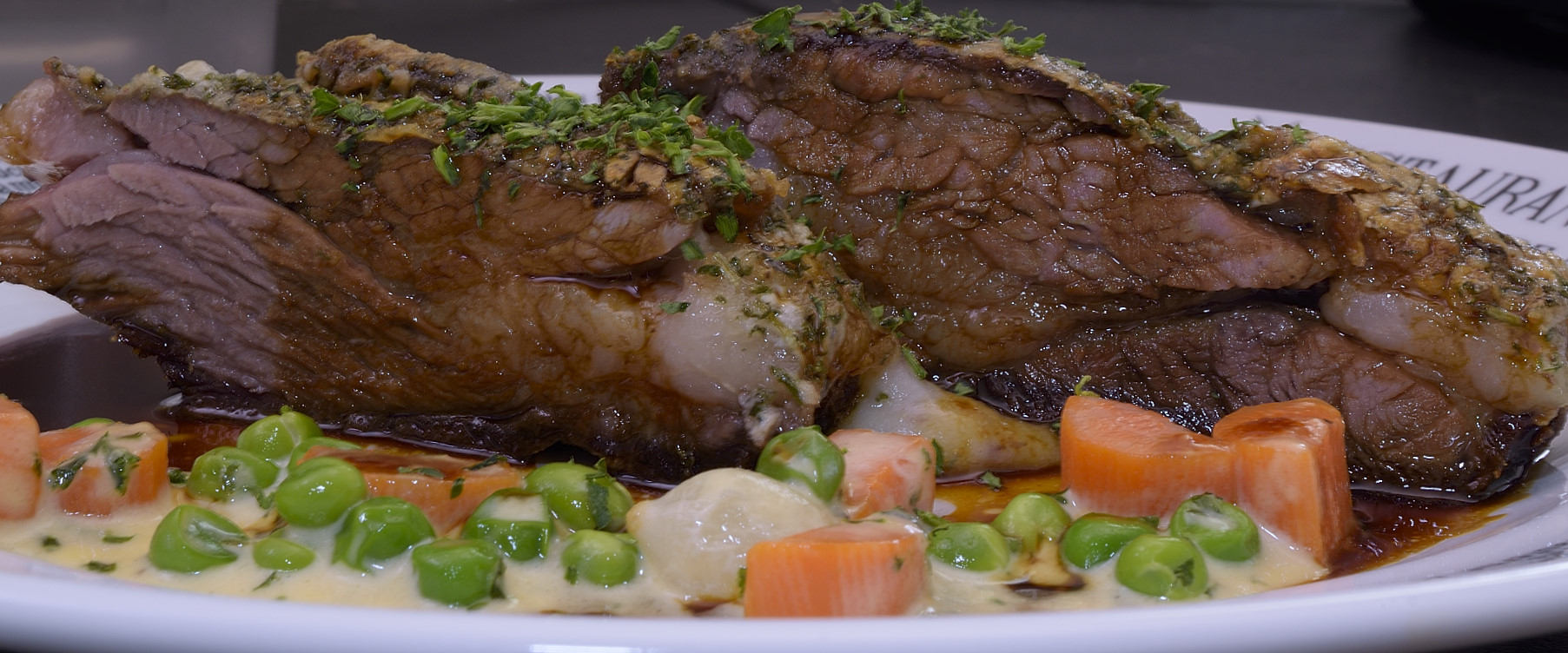
Through the years I have heard every lame excuse as to why the brown sauce did not come out brown–if it came out at all. Cooks with limited creativity would attempt in vain to explain what happened, or, well, what DIDN’T happen. “We ran out of brown.” Well, that’s succinct, anyway. “The oven wasn’t hot enough.” “I was in a hurry.” “You forgot to order beef base.” “The correct pan was dirty.” “The bones didn’t have enough meat on them.” “The meat didn’t have enough bones connected to it.” “I was late.” “The day shift was supposed to do it.” It’s always the other shift that was supposed to have done it. Brown wasn’t created in a vacuum. It doesn’t just occur. Cream is already white, and tomatoes are already red. Brown sauce has to be MADE brown.
Preventing the purple.
A lot of us know that brown sauce is supposed to start by roasting beef/veal bones with some meat on them. And that, my friends, is the first problem. It’s not a fallacy, but it is a little misleading. Acquiring beef bones is hard enough as it is, even for restaurants. The processing plants unload the bones on companies that make bone meal, pet food, dried brown gravy mix, glue and who knows what else. They can generate revenue without paying to ship the bones to your local market.
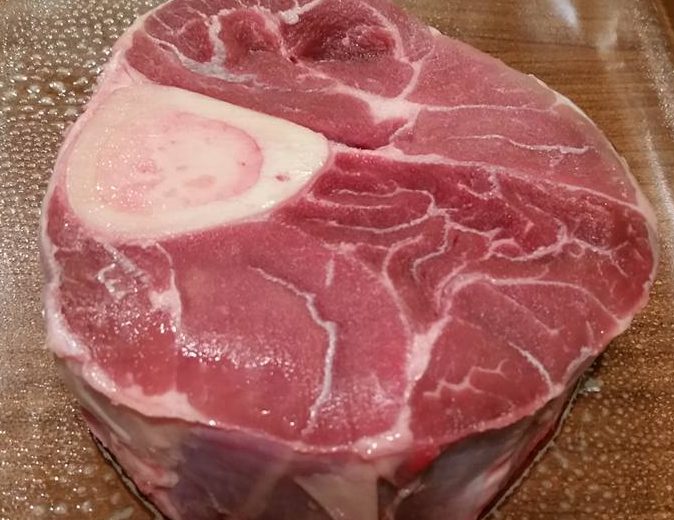
Things like beef shanks or neck bones are occasionally available, and that may be about as close as you’re going to get to “sliced shins and knuckles.” Marketers have managed to create a certain amount of cachet for those cuts, so they charge an arm and a leg for them now–“WAGYU BLACK ANGUS KNEES!–$8/lb.!” Like short ribs, beef shanks used to be a give away item. Not any more.
I am happy to tell you that you can make Espagnole and all of its cousins without actually using bones. If you trim meat at home the sinew and silver skin can be roasted to start building the sauce. We have a few detailed explanations of this method linked HERE and even a streamlined version of Pan Sauce Base that doesn’t even require meat products of any kind explained HERE.
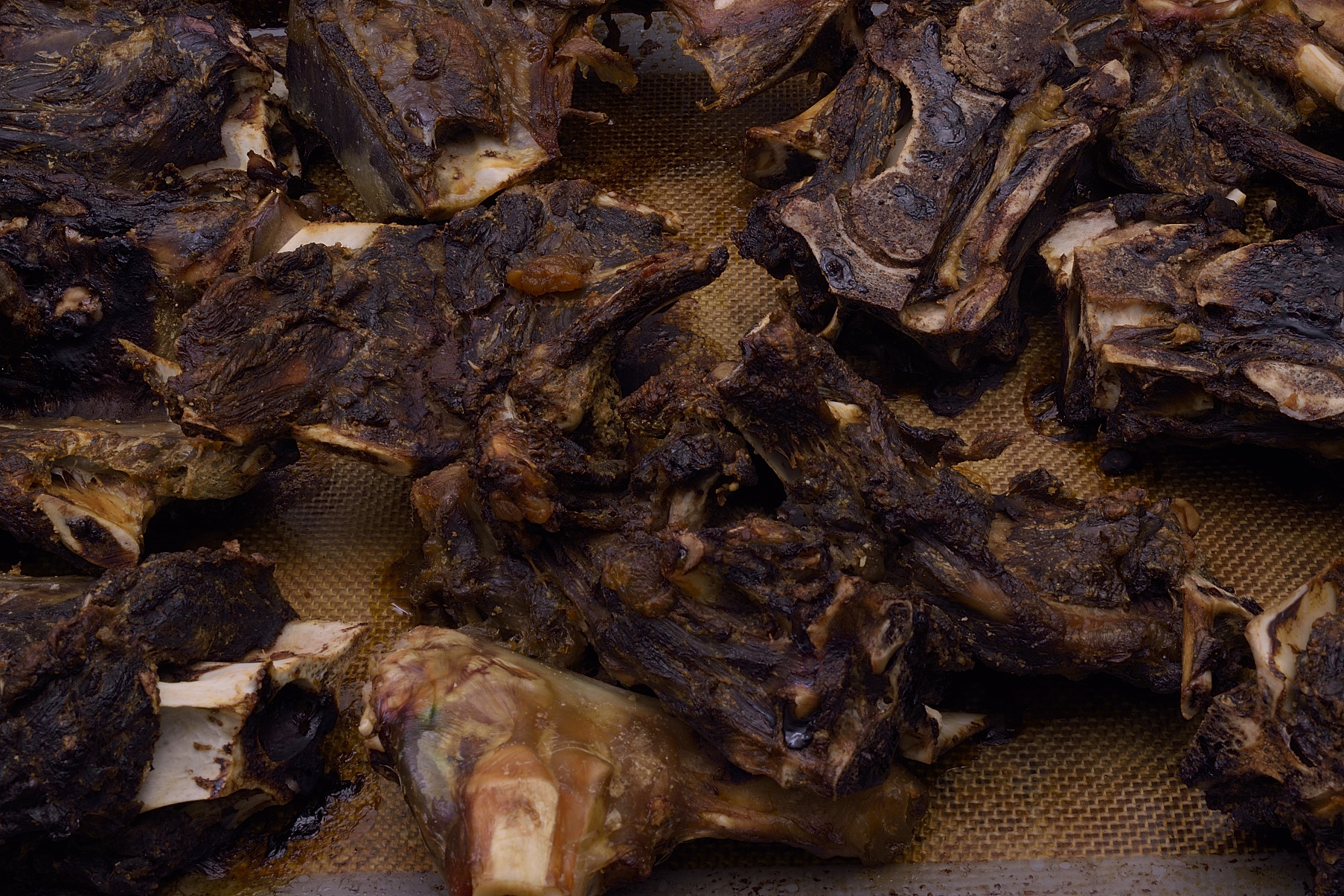
For the method that actually uses bones, we stage them into a 350 F/176 C oven on a sheet pan and roast for two hours. Three hours. Ruin it. Brown, browner, browner still. It will curl all up and look fully caramelized, fully Maillardized. Cool. Take it out of the oven.
Transfer the bones into a suitable pot and cover with cold water. Bring it to a boil. Just the meat and the water, nothing else. Simmer for 8 hours, or even longer, until it falls apart without even being touched, which it eventually will. Strain the stock. Look at it. Is it brown? Brown like Brown Gravy? I DIDN’T THINK SO. Well, why the heck not? Because the beef provides the flavor. Not the color. You can reduce that stock to almost nothing, but it still won’t be brown. Ha, nobody told us that, did they?
Back to square Juan.
Forget everything you knew, and forget everything you thought you knew, too. We’ve hit bottom. Not the first time. We get up, dust ourselves off, and start over. Sous vide to the rescue, in a round about way.
Take an axe.
Cut into bite size pieces:
3 carrots.
6 stalks celery.
2 onions.
Stage the celery and carrots onto a lightly oiled pan and drizzle with a little oil–oil conducts heat and it’s all going to get skimmed off later anyway. Grease is not an ingredient in sauce.
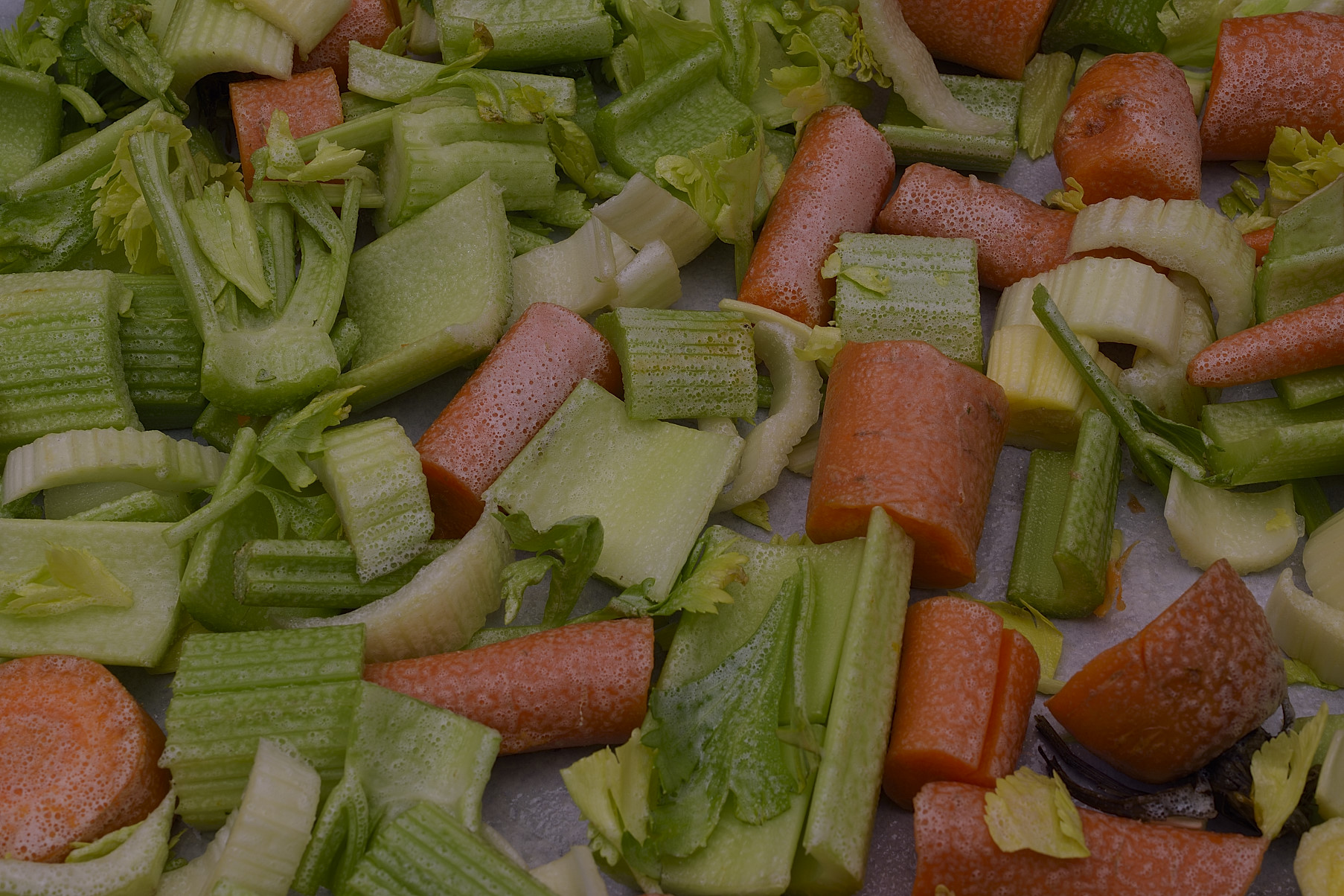
Avoid stacking the vegetables. They need to come in contact with the bottom of the pan and should be no deeper than in the pic. Roast at 350 F/176 C for one hour.
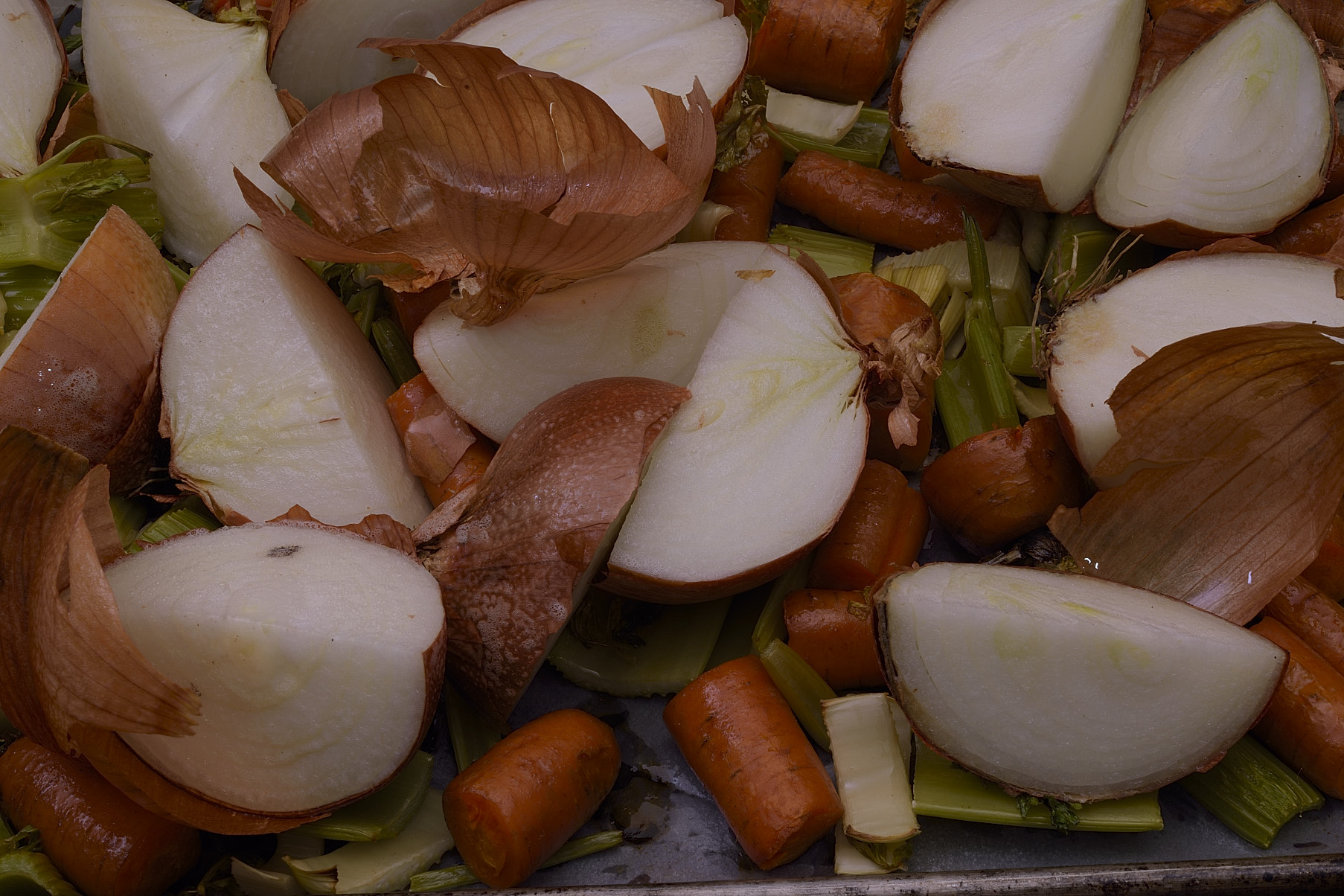
Add the onions–they brown more quickly than the other vegetables. Continue roasting until the vegetables wilt and get brown.
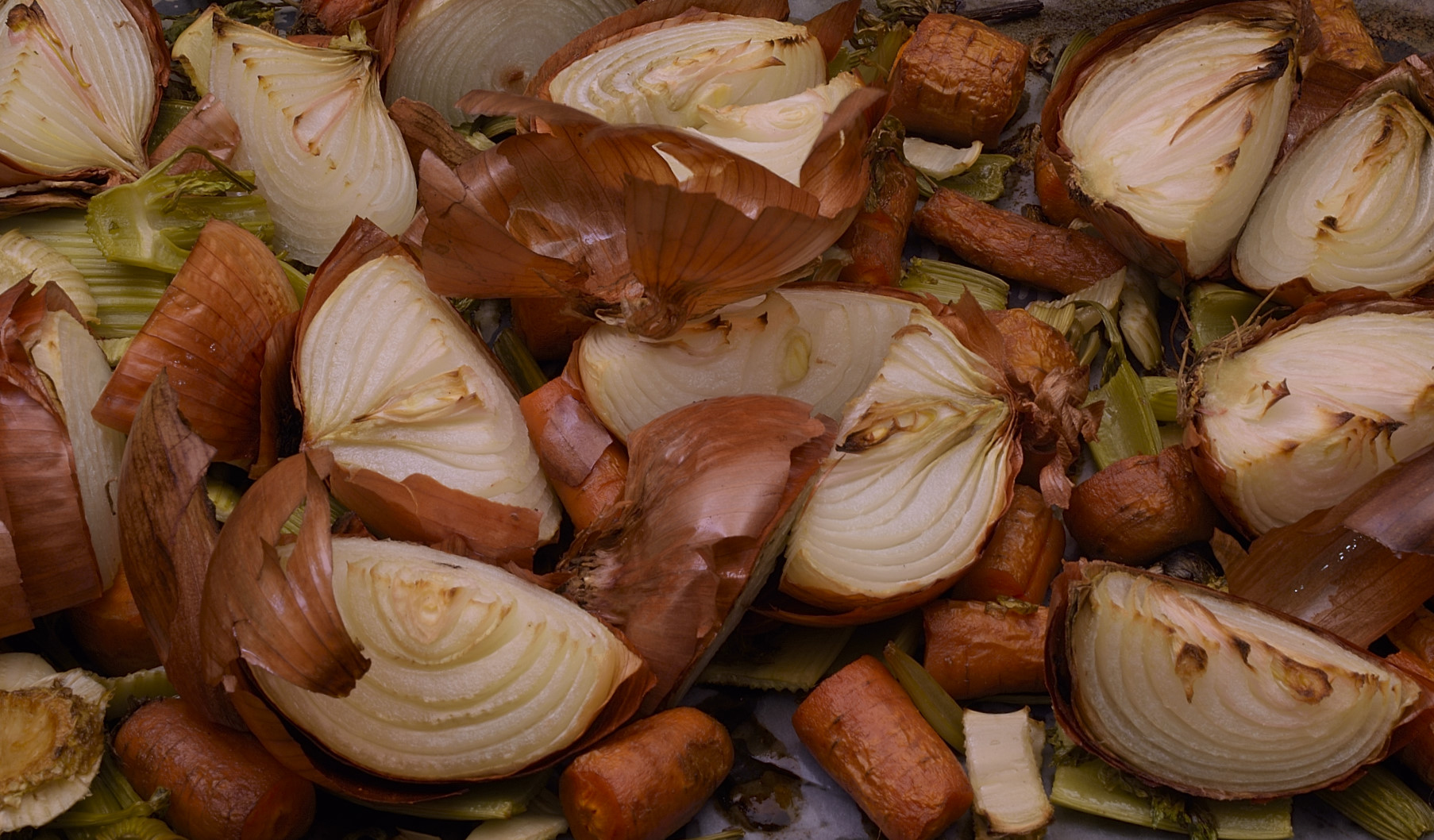
At least this brown. Even another half an hour would not be too much, I must have been late for a meeting or something.
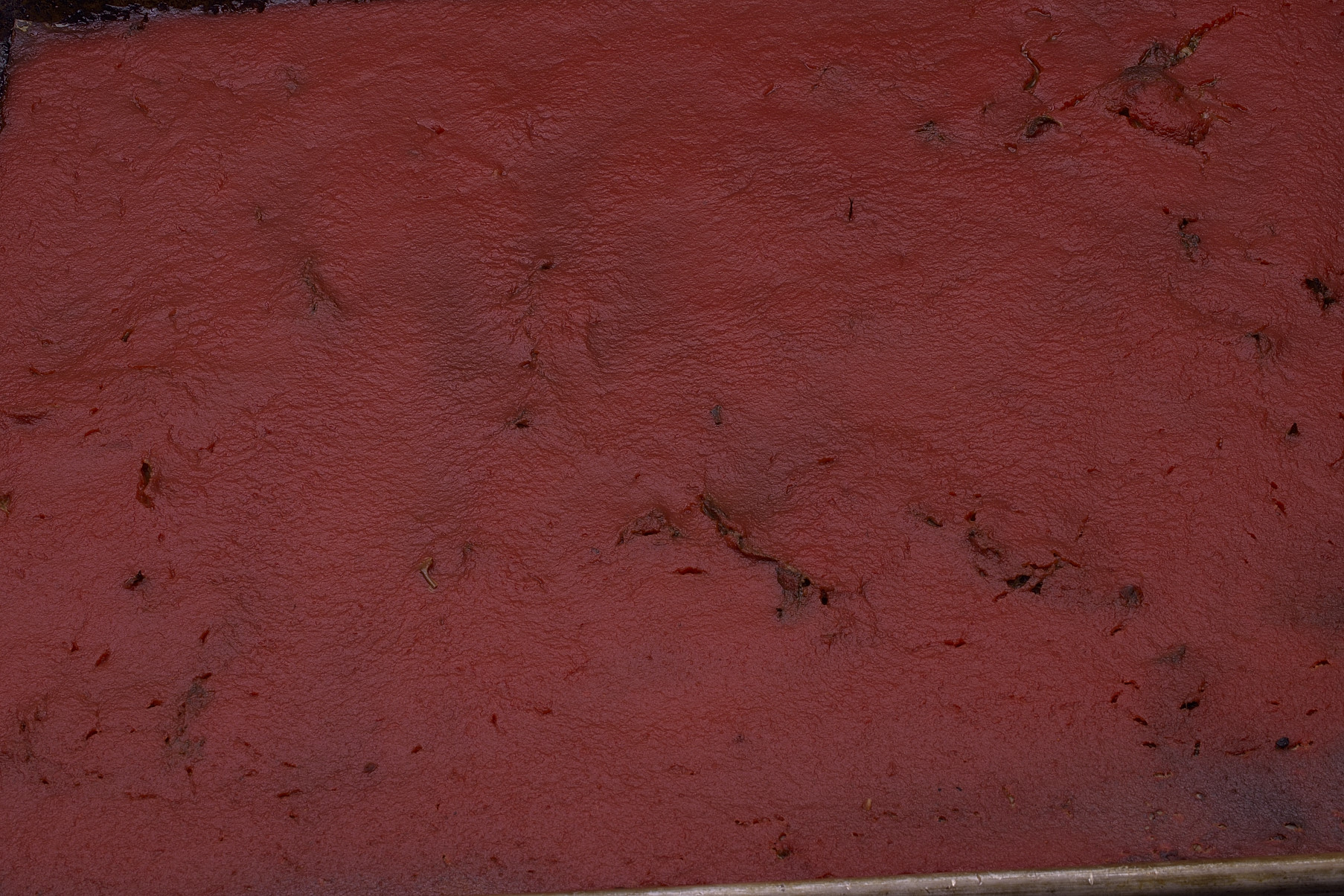
Remove the browned vegetables to the stock pot with Add 2 quarts/2 L water. I line the sheet pan with a silicone mat and spread out 15 oz. canned tomato SAUCE on the pan. You can use paste, too, but it’s kind of dry and is a little more difficult to spread around. Spray or drizzle with a bit of oil and return to the oven.
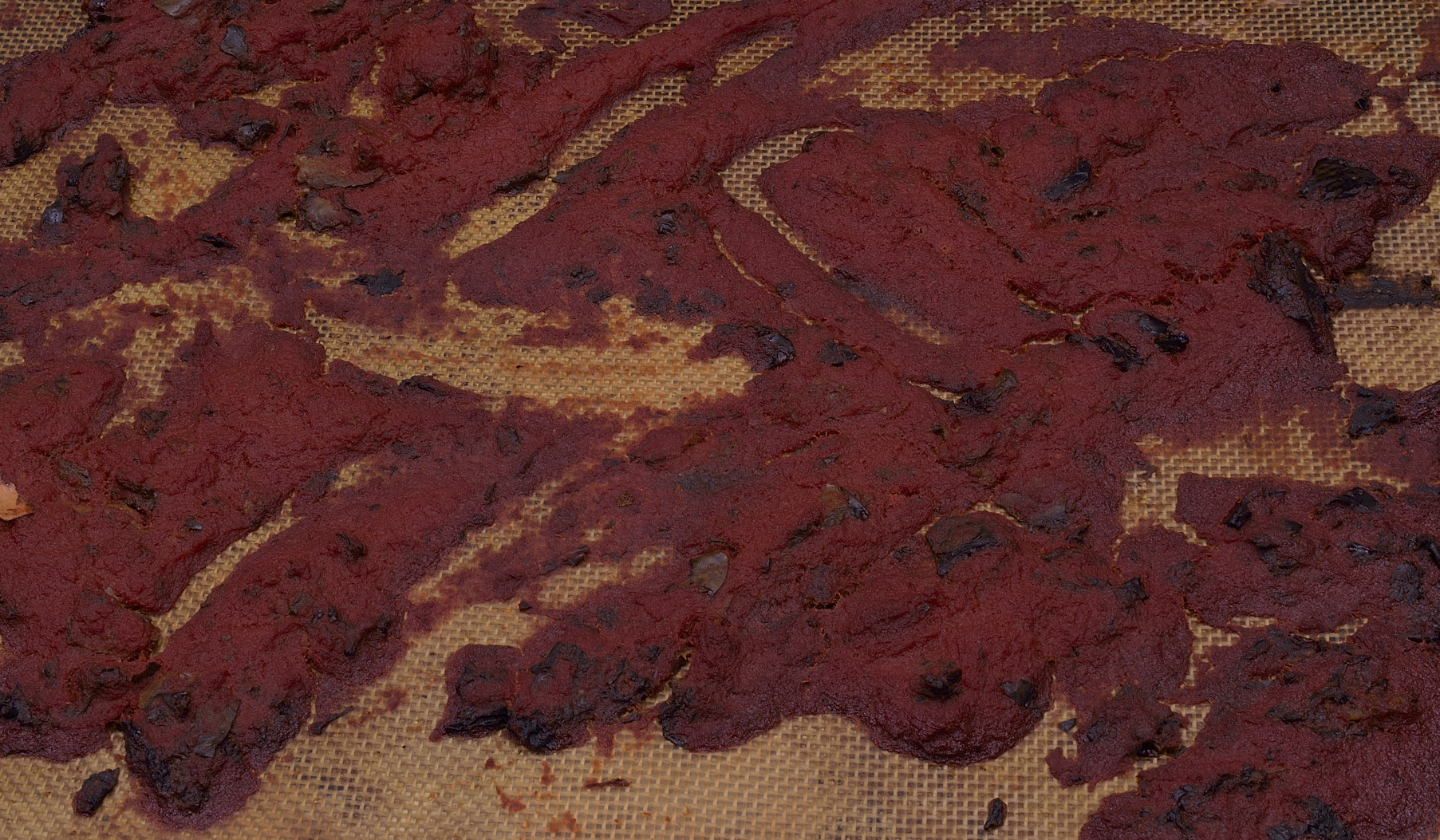
Stir/spread around after half an hour, continue roasting another half an hour.
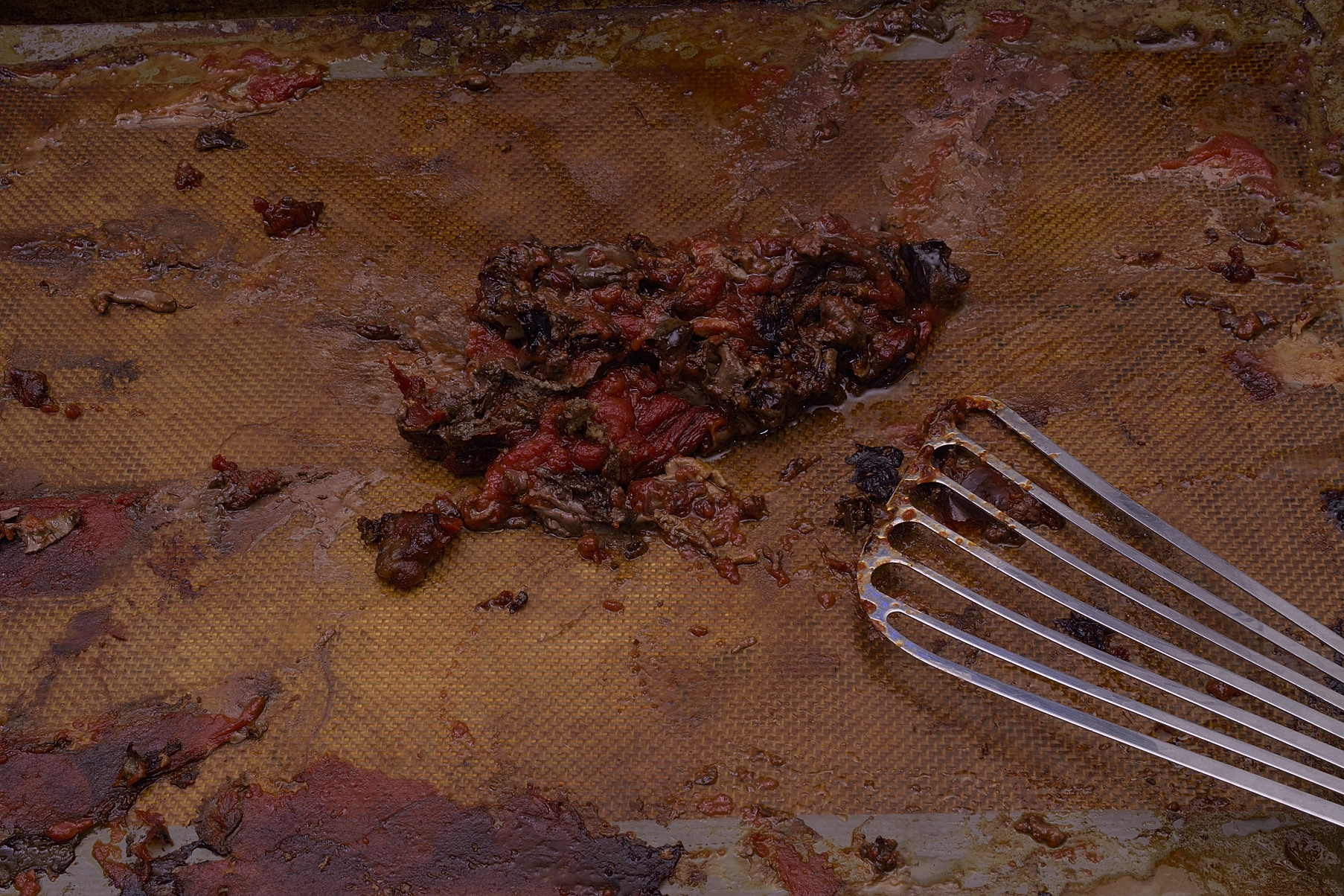
Silicone mats are great. Gather the well browned paste together and add to the stock pot.
If you’re going to add wine, this is the time to do it. I don’t, typically. Remember what I said, though. Wine is not supposed to provide volume. That’s how you get purple gravy. If you add wine, reduce it in a pan until the liquid is almost gone. And don’t use much. Really.
What brown is gonna do for us…
Bring the sauce to a boil, reduce to simmer, and give it at least eight hours. Strain. At this point, you will see that there is still a lot of body clinging to the vegetables because of the thickness of the tomato. You can put this back in the pan, drown it again, simmer, and use as stock. If you reduce it heavily, you can combine it with the first stock you made.
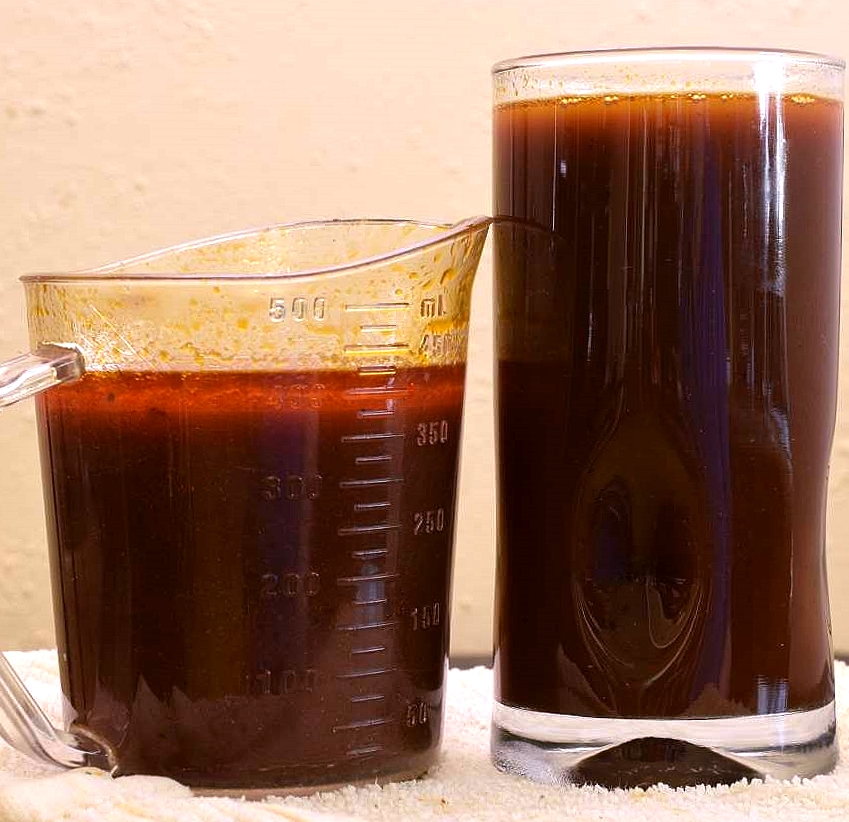
Cool it
This will give you a batch of brown stock, which is un-thickened espagnole. It should be cooled to 70 F/21 C before being refrigerated at 40 F/4 C. Once it’s cold, you can just break off the excess fat and discard it. Then, if desired, you can even clarify it according to the method explained HERE.
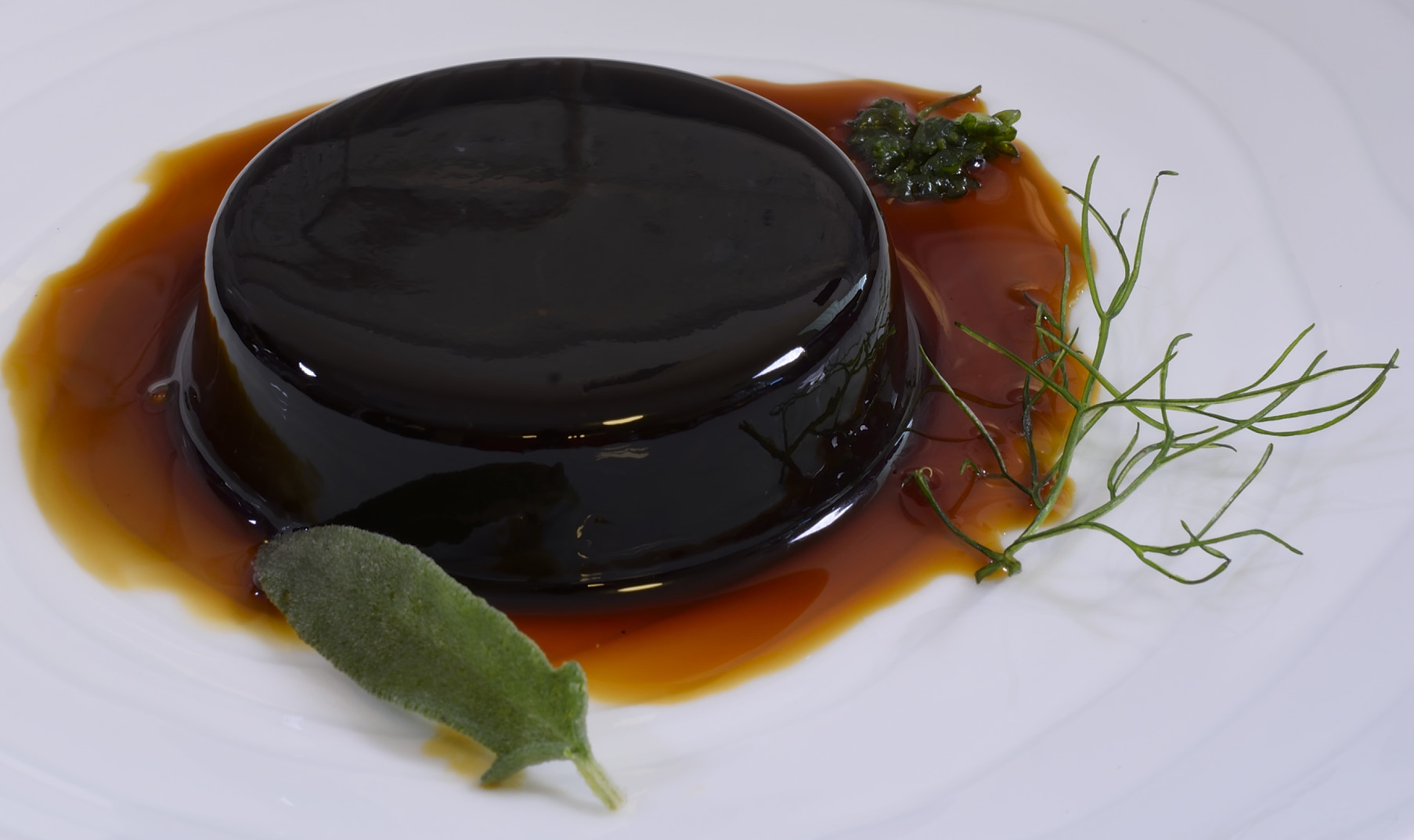
If you then reduce it long enough, you will actually get this.

